From the moment we rise, many of us reach out for that one thing that helps to kick-start our day – a hot, comforting cup of coffee. Across the globe, millions partake in this ritual, making coffee a daily staple in our lives. But how much do we really know about these little beans that deliver our daily jolt of caffeine? Let’s embark on a journey from the coffee plantations to the cups in our hands, unraveling the fascinating history, exploring the diversity of coffee drinks, and appreciating the art and science of brewing the perfect cup of coffee.
History of Coffee Drinks

Early Beginnings
Have you ever wondered how your morning cup of Joe came to be? The history of coffee is as rich as its aroma. It started in the Ethiopian highlands, where wild coffee trees still grow.
Legend has it that a shepherd named Kaldi noticed his goats dancing joyfully after eating coffee cherries. Intrigued, he tried the cherries himself and felt a similar jolt of energy. Soon, coffee began its journey across continents.
Spread and Global Acceptance
From the Ethiopian highlands, coffee traveled to Yemen and across the Arab world.
By the 15th century, it reached Turkey, where coffee beans were roasted for the first time, resulting in the more familiar form of the drink. The beverage eventually spread to Europe and later the Americas, becoming the global phenomenon that it is today.
Popular Types of Coffee Drinks
Espresso

Espresso forms the base of many coffee drinks. It’s a concentrated form of coffee brewed by forcing pressurized hot water through finely-ground coffee beans. It’s intense, rich, and will certainly wake you up!
Cortado
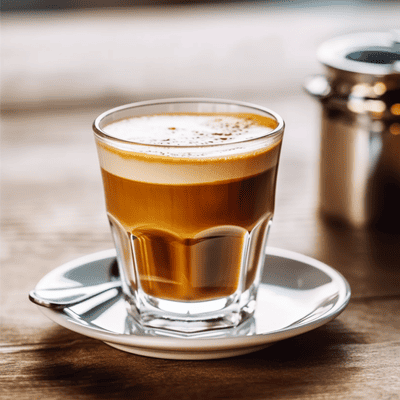
A cortado is an espresso cut with an equal amount of warm milk to reduce the acidity. The milk in a cortado is steamed but not frothy or foamy as in many Italian coffee drinks. This drink is highly popular in Spain and Portugal, as well as in Latin American countries.
Cappuccino
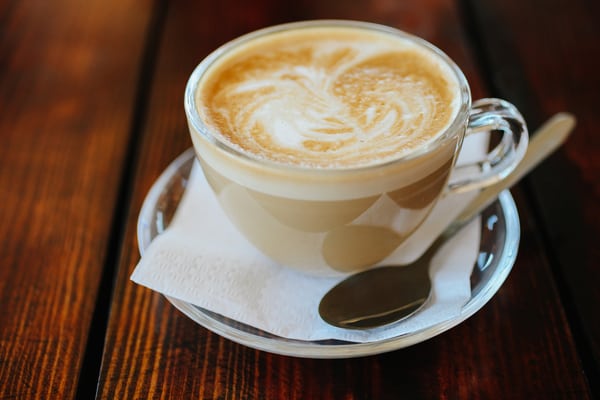
The cappuccino is a classic Italian coffee drink that consists of equal parts espresso, steamed milk, and frothed milk. The result is a smooth, creamy beverage that is as pleasing to the palate as it is to the eye.
Americano
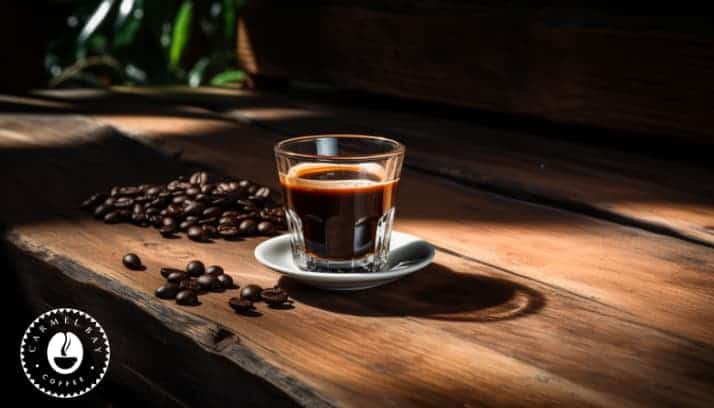
The Americano is an espresso diluted with hot water, giving it a similar strength to traditionally brewed coffee but retaining the unique flavors of espresso.
To read the history and find our Americano recipe, check out our article here.
Flat White
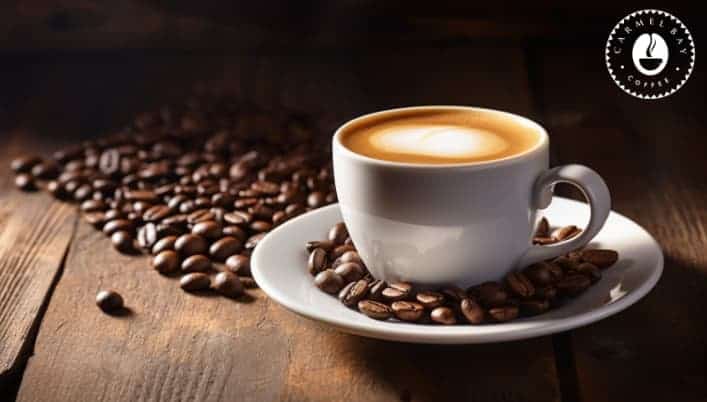
Originating from Australia and New Zealand, a flat white is made by pouring smooth steamed milk over a single or double shot of espresso. The key difference between a flat white and a latte or a cappuccino lies in the ratio of coffee to milk. A flat white has less milk, allowing the espresso’s flavor to shine, and a thin layer of microfoam on top.
Latte
The latte is another popular coffee drink, composed of one-third espresso and two-thirds steamed milk, topped with a small amount of milk foam. Its mild flavor and creamy consistency make it a favorite among many coffee lovers.
Mocha
A mocha is essentially a chocolate-flavored variant of a latte. It’s made with one-third espresso, two-thirds steamed milk, and a portion of chocolate, typically in the form of sweet cocoa powder or chocolate syrup. Often topped with whipped cream, it’s a perfect choice for those who love coffee and chocolate in equal measure.
Macchiato
The macchiato, which means “stained” or “spotted” in Italian, is an espresso with a small amount of foamed milk on top. The idea behind this coffee drink is to slightly moderate the harshness of an espresso shot without diluting its taste significantly.
Ristretto

The ristretto is an espresso shot that is extracted with the same amount of coffee but half the amount of water. The result is a more concentrated and darker espresso extraction that is less bitter and has a more intense flavor.
Please take a look at our ristretto recipe here.
Unique Types of Coffee Drinks
Black Eye

A black eye is a strong coffee drink combining regular drip coffee with two espresso shots. It’s the perfect choice for those looking for an extra caffeine kick.
It’s a straightforward recipe, but to get all the detail on making the best Black Eye Coffee, take a look at our recipe.
Red Eye

A red eye is similar to a black eye but slightly less intense. It consists of regular brewed coffee topped with a single shot of espresso. This combination results in a highly caffeinated drink with a more balanced flavor.
Café Cubano
Also known as Cuban espresso, Café Cubano is an espresso shot that is sweetened with demerara sugar as it’s being brewed. The result is a sweet and strong coffee that is often used as a base for other Cuban coffee drinks.
Café Breve

This is my favorite coffee right now; I use my Moka pot because I like my espresso to taste a little “muddy.”
A café breve is an American version of a latte, made with half milk and half cream instead of all milk. This change gives the café breve a richer and creamier texture compared to a regular latte.
Con Panna
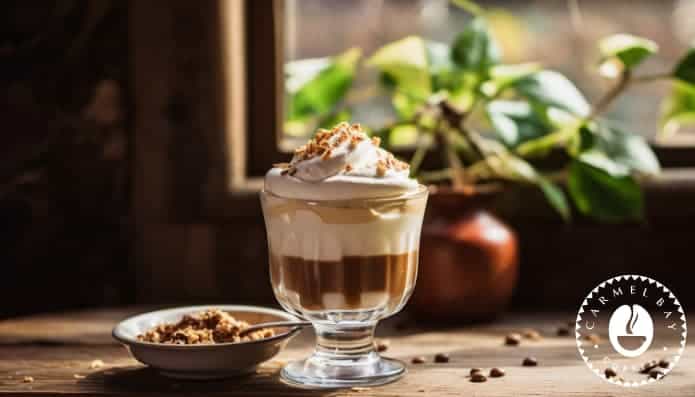
Con Panna, which means “with cream” in Italian, is an espresso shot topped with whipped cream. It offers a delightful contrast between the rich, bitter espresso and the light, sweet cream.
Lungo
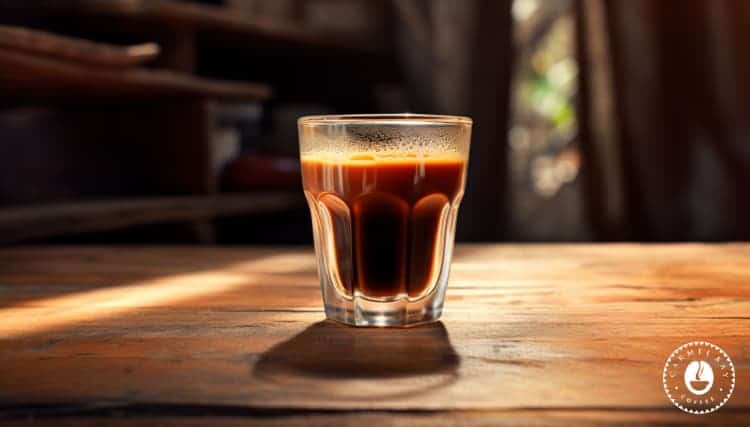
A lungo is a long-pull espresso. This means the extraction time is longer, allowing more water to flow through the coffee grounds. The result is a coffee drink that’s stronger and more bitter than a regular espresso but less intense than a ristretto.
Find out the perfect way of making a Lungo.
Vienna Coffee
Vienna coffee is a traditional cream-based coffee beverage made by preparing two shots of strong black espresso in a standard-sized coffee cup and infusing the coffee with whipped cream until the cup is full. Then the cream is twirled and optionally topped off with chocolate sprinklings.
Coconut Latte
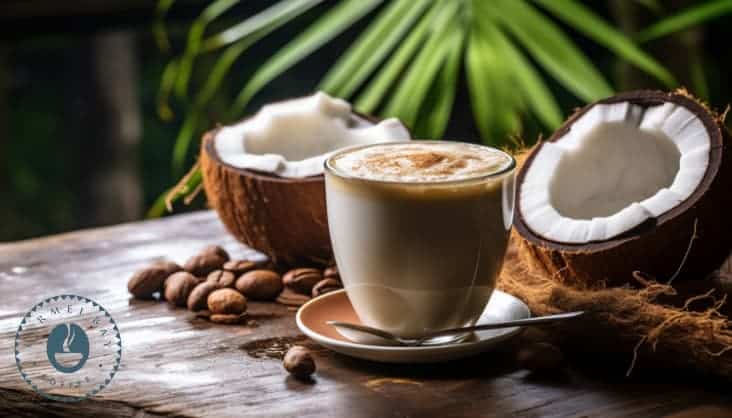
The Coconut Latte is an exquisite variation of your regular latte, replacing traditional dairy milk with luscious coconut milk. This latte variant combines the robust flavors of coffee with the tropical notes of coconut for a refreshing twist.
Take a look at our article for the full Coconut Latte recipe.
Understanding the Coffee Bean
Arabica Coffee Beans

Arabica beans account for about 60-70% of the world’s coffee production, making them the most commonly consumed type of coffee beans. Originating in the highlands of Ethiopia, these beans are typically grown in high altitudes, often above 1000 meters, where the climate is cool and the soil is rich.
In terms of flavor, Arabica beans are renowned for their highly diverse flavor profiles. They are often described as having a softer, sweeter taste, with notes of sugar, fruit, and berries. Their acidity is higher, with that winey taste that characterizes coffee with excellent acidity.
Arabica coffee trees are quite delicate, requiring a specific climate with a lot of rain, stable temperatures, and a large amount of shade. They are also prone to diseases and pests, which makes them more challenging and costly to cultivate and maintain.
Robusta Coffee Beans
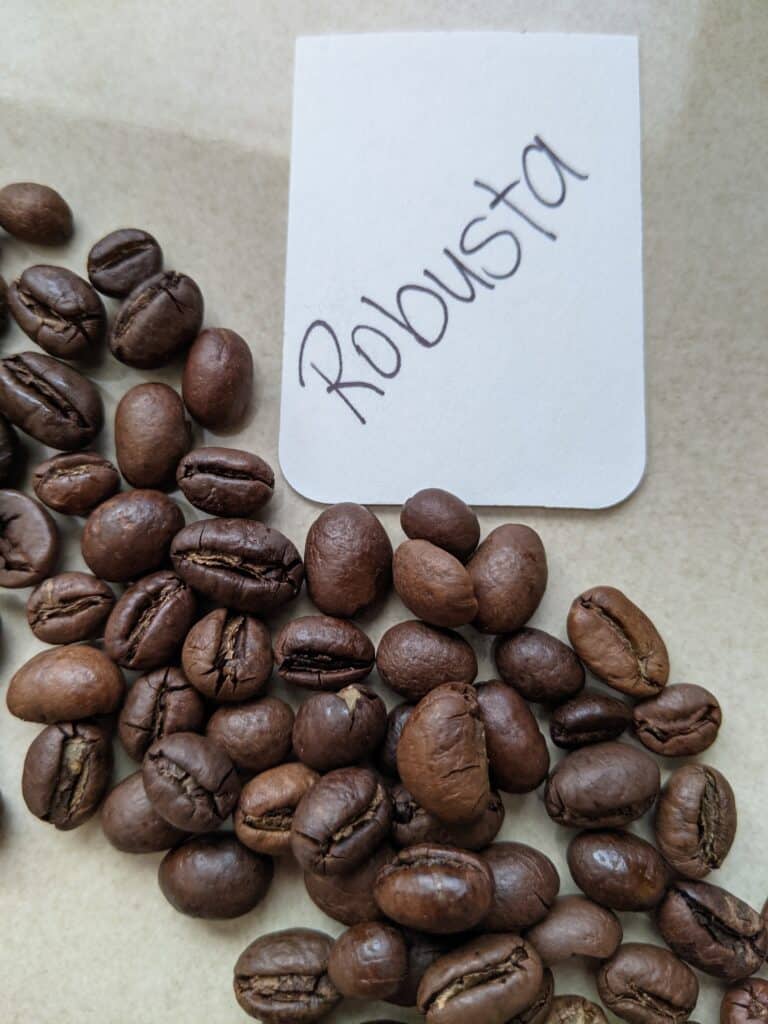
Robusta coffee beans, on the other hand, account for about 30-40% of global coffee production. They are primarily grown in Africa, Vietnam, Brazil, and Indonesia.
Robusta beans are known for their strong, harsh flavor, often described as having a nutty, earthy, or grainy taste with a smooth, peanutty aftertaste. They also contain nearly twice as much caffeine as Arabica beans, which gives them a bitter taste but also makes them less susceptible to diseases and pests.
Robusta beans are grown at lower altitudes than Arabica, in hotter climates, and can withstand wider ranges of temperature. They are more resistant to diseases, which makes them easier and cheaper to cultivate and produce.
When it comes to the choice between Arabica and Robusta, it all boils down to personal preference. If you prefer a smooth and nuanced cup of coffee, Arabica is probably your go-to bean. But if you like your coffee strong, full-bodied, and with an extra kick of caffeine, you might find Robusta to your liking.
Regardless of your preference, understanding the differences between Arabica and Robusta beans can enhance your coffee-drinking experience. You’ll not only be able to distinguish between different coffee tastes but also appreciate the art and science that goes into making every cup of coffee.
To get started in finding the best coffee beans, you should consider a coffee subscription. You can try out different subscriptions without committing to buying large bags.
How to Make Perfect Coffee at Home
Choosing the Right Equipment
Brewing an exquisite cup of coffee at home begins with choosing the right equipment, which largely depends on the type of coffee you enjoy and how much effort you’re willing to put in.
For a full-bodied and flavor-rich cup of coffee, you might want to consider a French Press. This classic brewing method allows the coffee grounds to steep in boiling water, which extracts a lot of flavors.
On the other hand, if you’re an espresso lover, investing in a good-quality espresso machine can elevate your home brewing experience. There are various models available, from semi-automatic machines for the hands-on barista to super-automatic ones that do everything at the press of a button.
A pour-over or drip coffee maker is a good option if you prefer a cleaner taste. These devices allow water to flow through the coffee grounds, picking up flavors along the way, and into your cup or carafe below.
Remember, no matter which brewing method you choose, a good coffee grinder is a must. The freshness of ground beans can greatly affect the taste of your coffee. A burr grinder is recommended as it grinds coffee to a consistent size, which is important for the extraction process.
The Brewing Process
With your beans and equipment ready, it’s time to brew. However, making great coffee isn’t just about having high-quality beans and the right gear. It’s also about the process.
- Correct Water Temperature: The water temperature plays a critical role in the extraction process. Generally, it should be between 195°F (91°C) and 205°F (96°C). Too hot, and your coffee can over-extract, leading to bitterness. Too cool, and your coffee may under-extract, resulting in a weak, sour taste.
- Right Coffee to Water Ratio: This ratio determines the strength of your coffee. A general guideline is to use 1 to 2 tablespoons of coffee grounds for every six ounces of water. However, this can be adjusted based on personal taste.
- Proper Brewing Time: The brewing time will depend on the method used. An espresso shot takes about 20-30 seconds, a French press needs 4-5 minutes to steep, while a pour-over may take 2-3 minutes.
Remember, brewing coffee is an art, and it’s all about finding what tastes best to you. Experiment with different methods, beans, and brewing parameters to find your perfect cup.
Health Benefits and Risks of Coffee
Coffee is not just a morning pick-me-up; it’s also a source of antioxidants, which can help protect the body from damage by harmful molecules. Regular coffee drinkers may have a lower risk of developing Alzheimer’s disease, Parkinson’s disease, heart disease, diabetes, liver diseases, and even some types of cancer.
Moreover, the caffeine in coffee can enhance physical performance by increasing adrenaline levels. It also boosts mood and brain function, improving memory, reaction times, and general mental function.
However, it’s important to remember that these benefits are most likely to be experienced when coffee is consumed in moderation, typically defined as not exceeding 3-4 cups a day. Excessive coffee consumption can lead to various health risks, such as sleep disorders, digestive problems, increased heart rate, and dependency due to caffeine’s addictive nature.
Future of Coffee Drinks
The world of coffee drinks is dynamic and ever-evolving. The rise of third-wave coffee shops highlights the increasing appreciation for high-quality coffee, where every cup is viewed as an artisanal creation.
The future of coffee drinks lies in innovations in brewing techniques and a greater focus on sustainability. As people continue to seek out new coffee experiences, the coffee industry is responding with innovative brewing methods and equipment that allow for greater control over the taste and quality of the final cup.
In terms of sustainability, the coffee industry is working on every step of the coffee chain – from farming practices that protect the environment and enhance the livelihood of coffee growers, to the development of eco-friendly packaging and waste reduction strategies in coffee shops.
In essence, the future of coffee drinks is one where quality, taste, and sustainability go hand in hand. This bodes well for us, coffee lovers, as we can look forward to better, more flavorful, and more responsibly produced coffee.
FAQs – Coffee Drinks
What Is the Difference Between a Latte and a Cappuccino?
The main difference is in the ratio of coffee, steamed milk, and foam. A cappuccino has equal parts of all three, while a latte has more steamed milk and a small amount of foam.
What Is Third-Wave Coffee?
Third-wave coffee refers to the contemporary movement that considers coffee as an artisanal food, like wine, rather than a commodity. It involves appreciating the nuances of flavor, the sourcing of the beans, and the method of preparation.
Is Coffee Good or Bad for Health?
Coffee, in moderation, can have several health benefits. However, excessive consumption can lead to potential health risks. It’s important to know your limits and consume responsibly.
Can I Make Great Coffee at Home?
Absolutely! With the right equipment, good-quality beans, and a bit of practice, you can brew a great cup of coffee at home.
Which Is Better, Arabica or Robusta?
It depends on personal preference, but generally, Arabica is considered better. Arabica is generally smoother and less bitter, while Robusta is stronger and more caffeine-rich.
Wrapping Up Different Types of Coffee Drinks
Coffee, in all its varied forms, remains a favorite drink for many. It’s not just about the taste or the caffeine kick, but also about the ritual, the community, and the culture it fosters. So, the next time you sip on your coffee, take a moment to appreciate the journey it has made from the bean to your cup.

